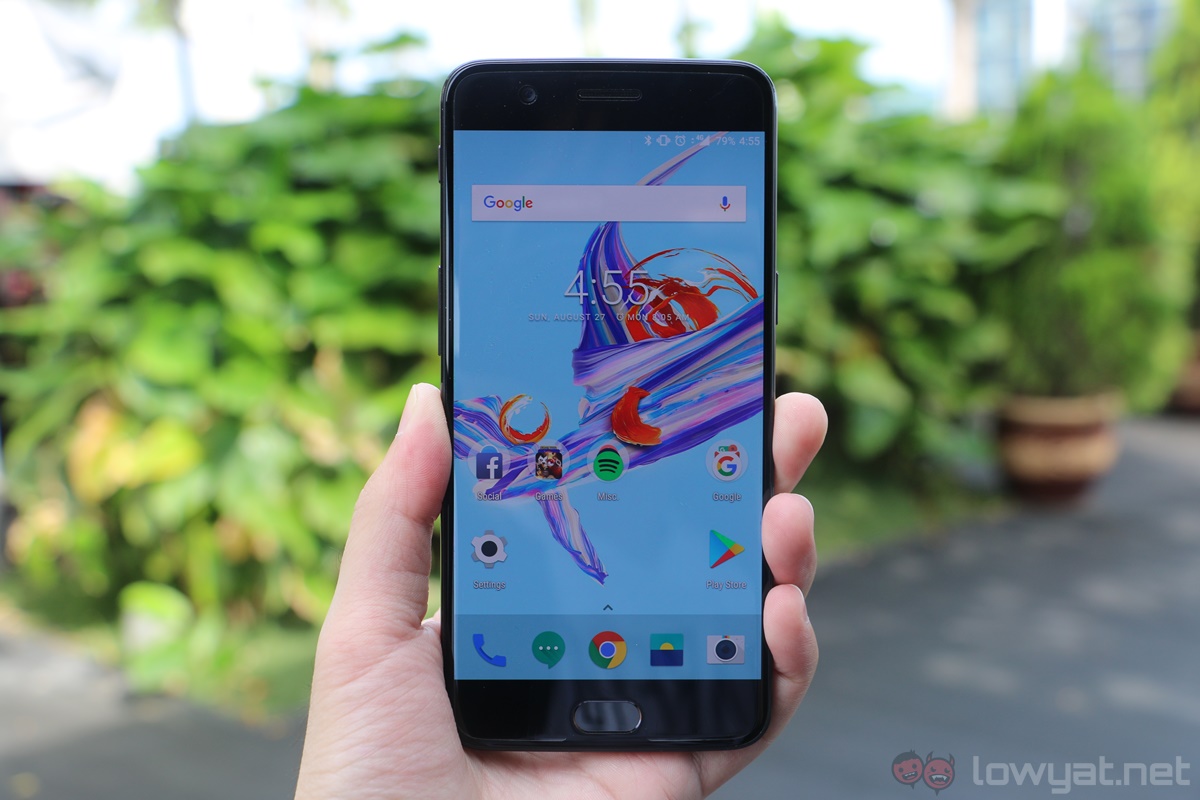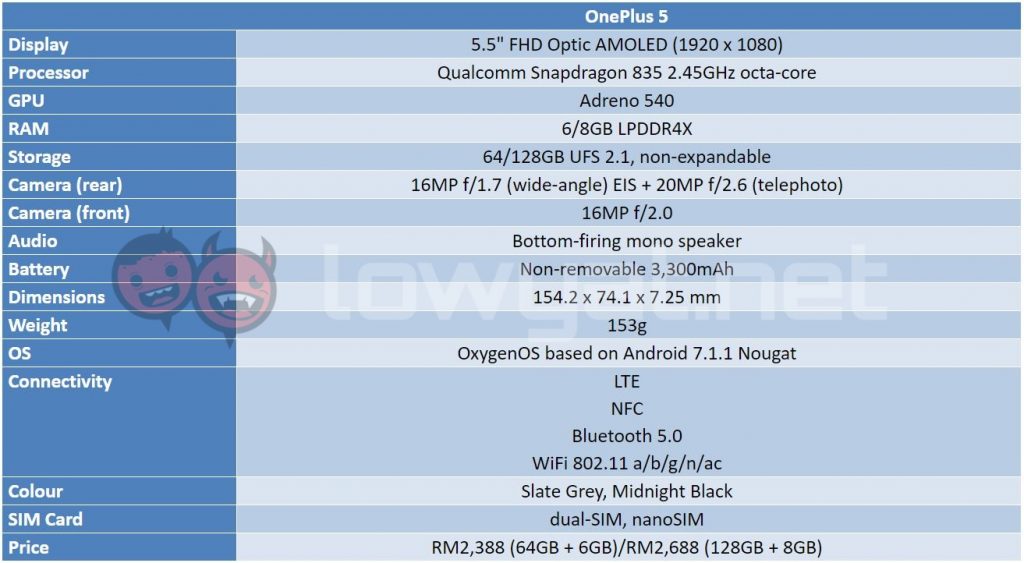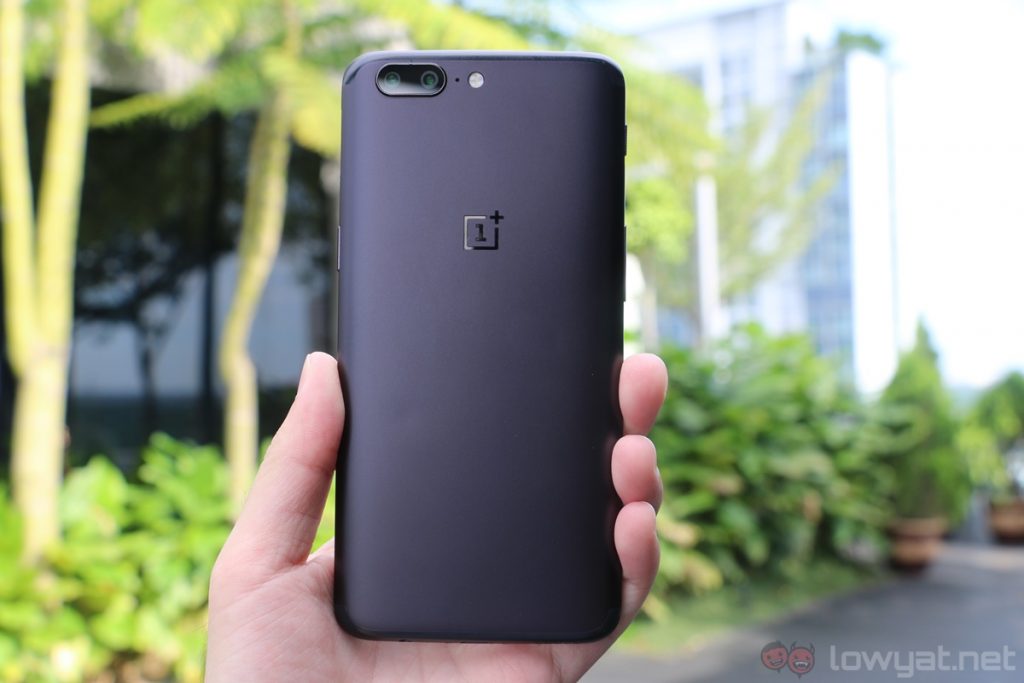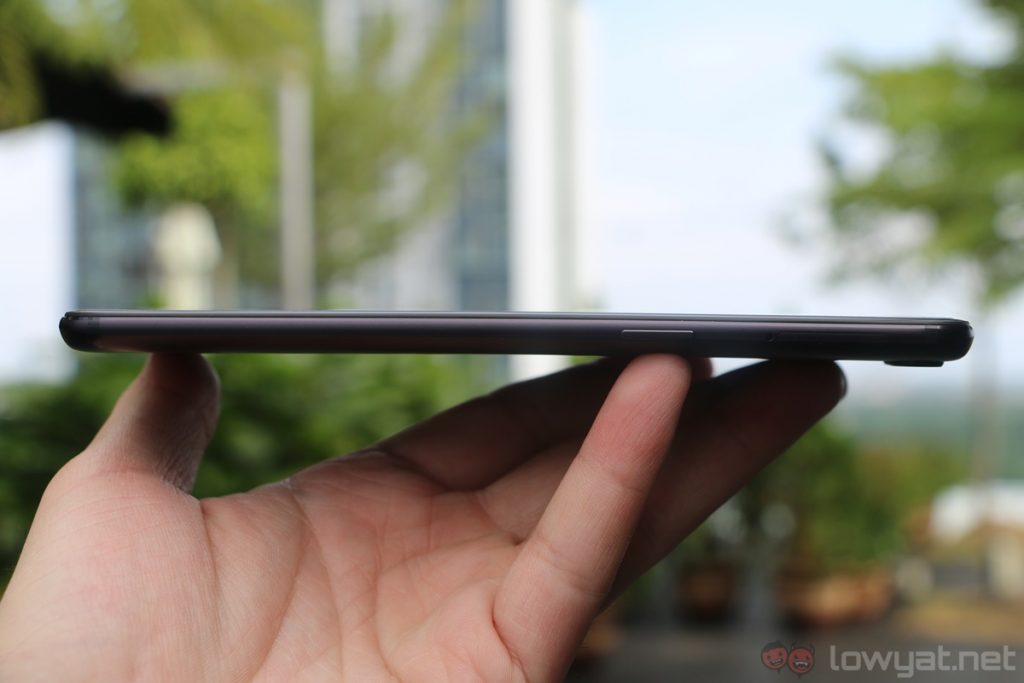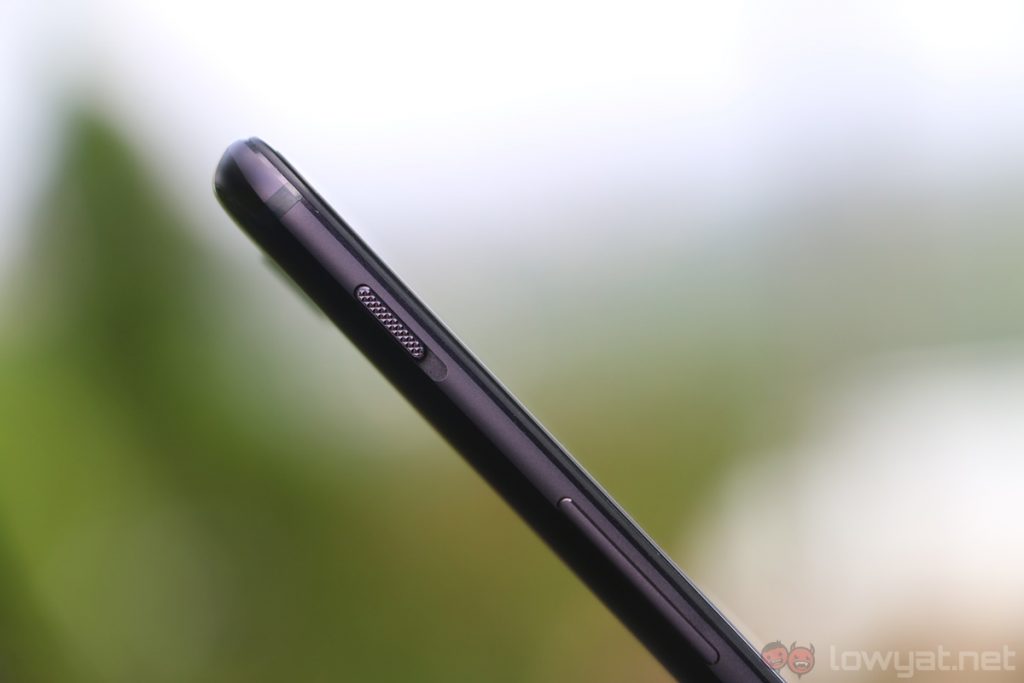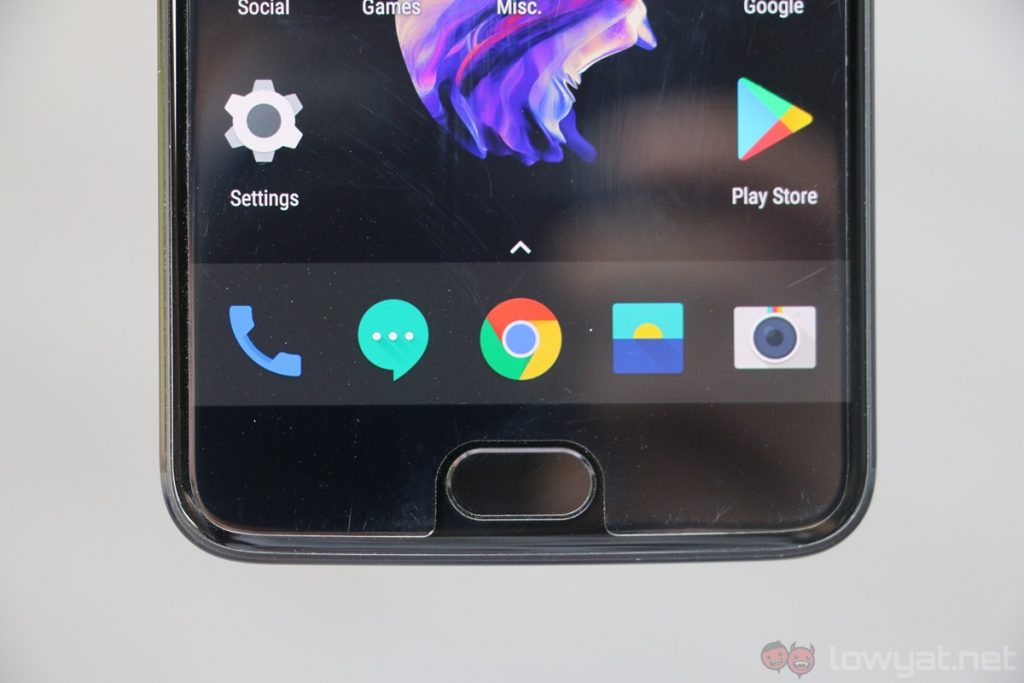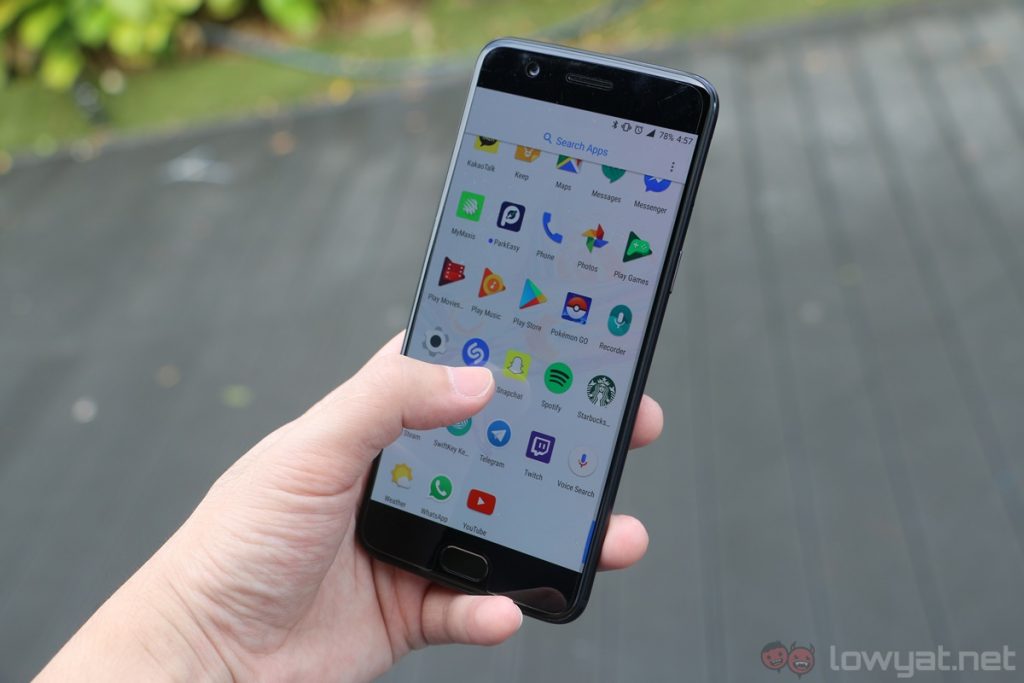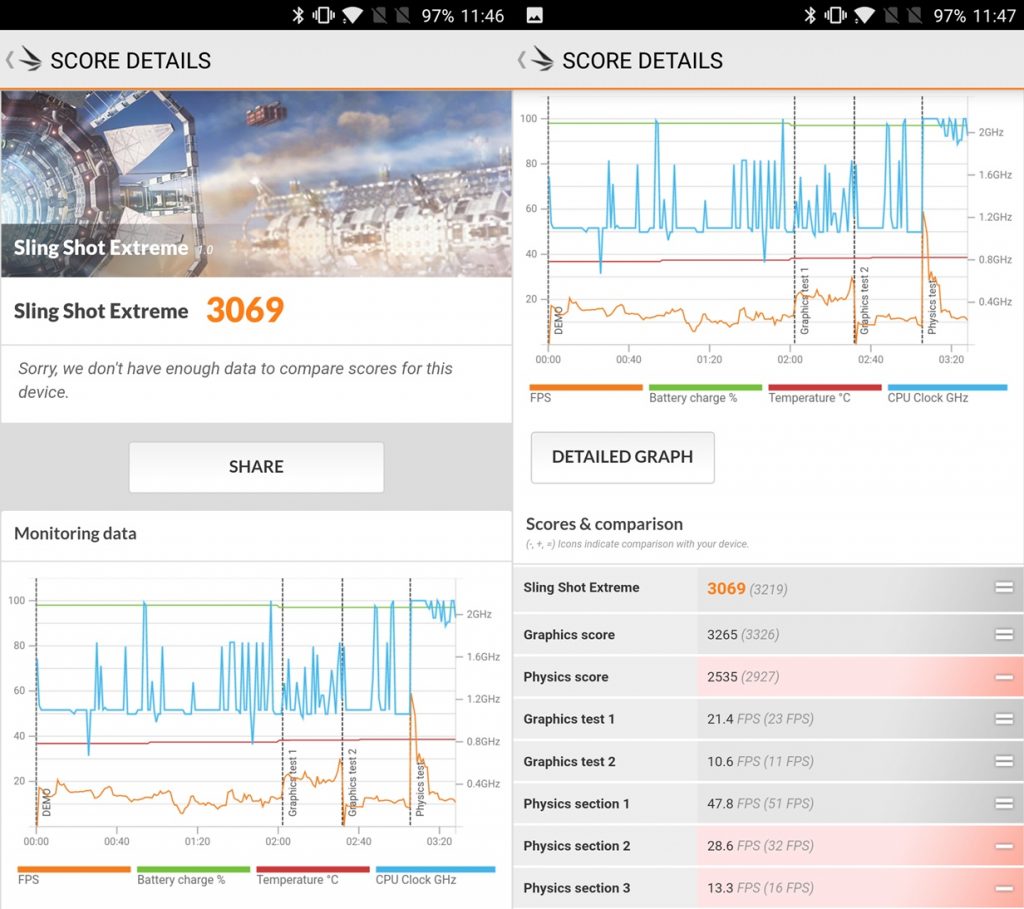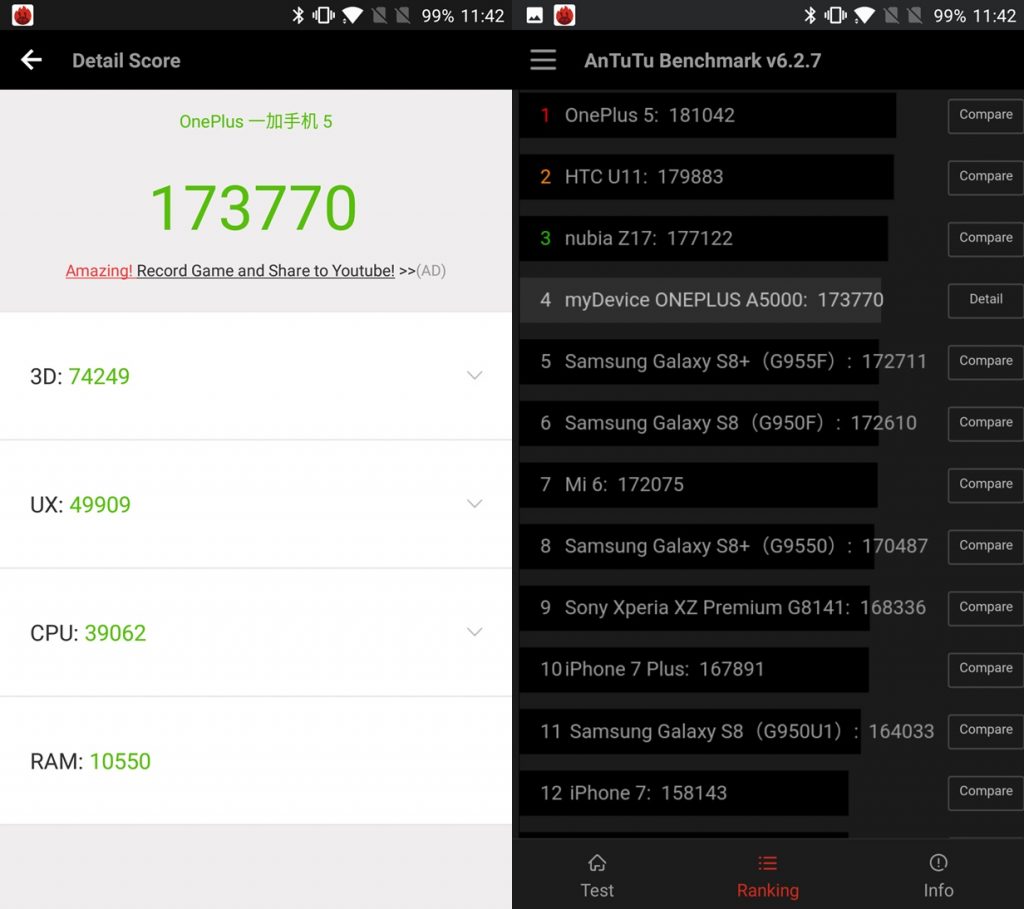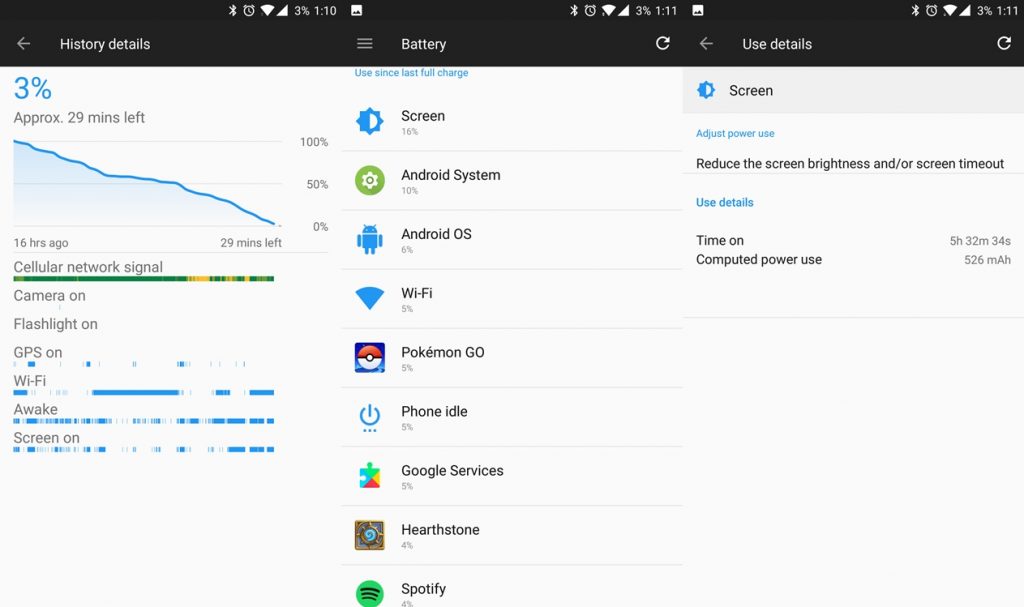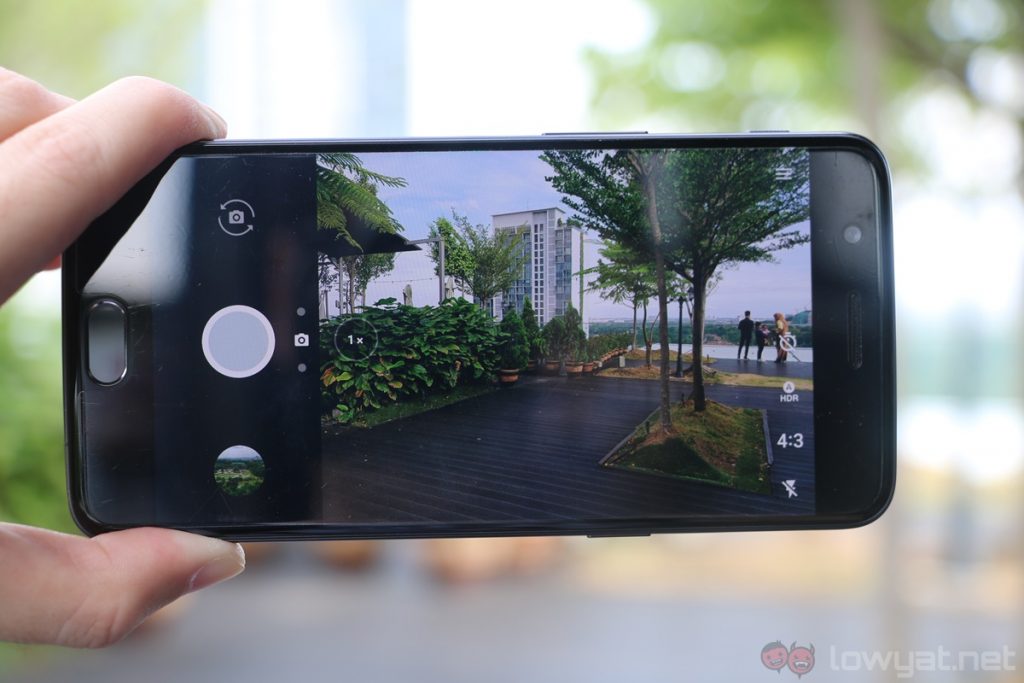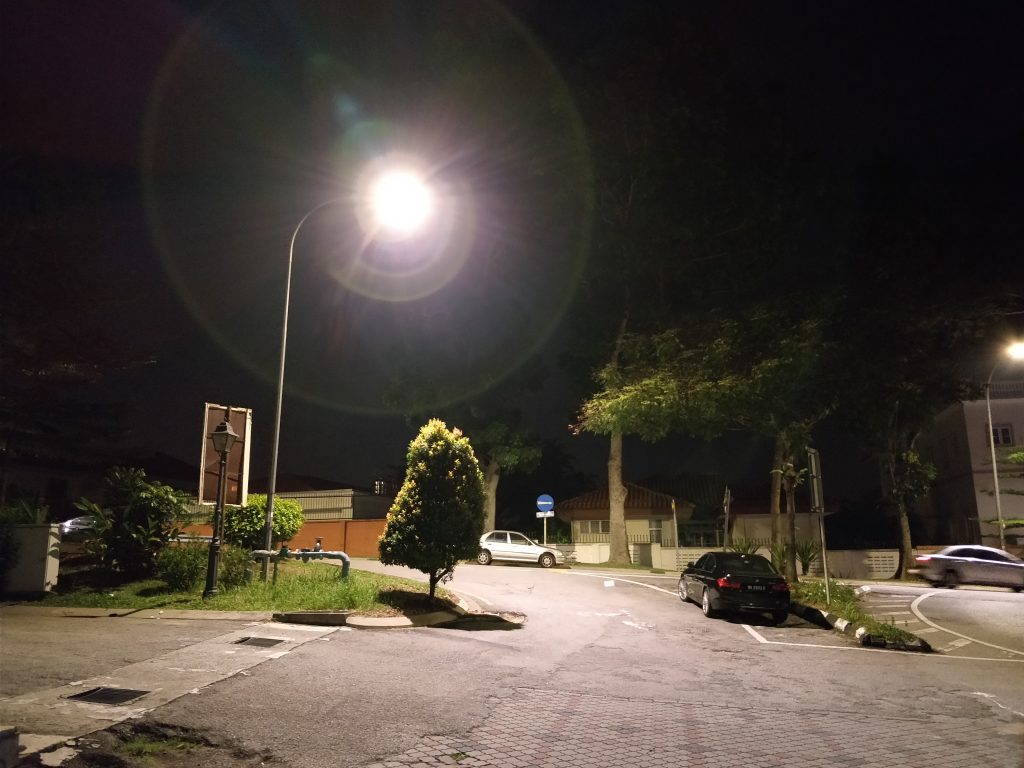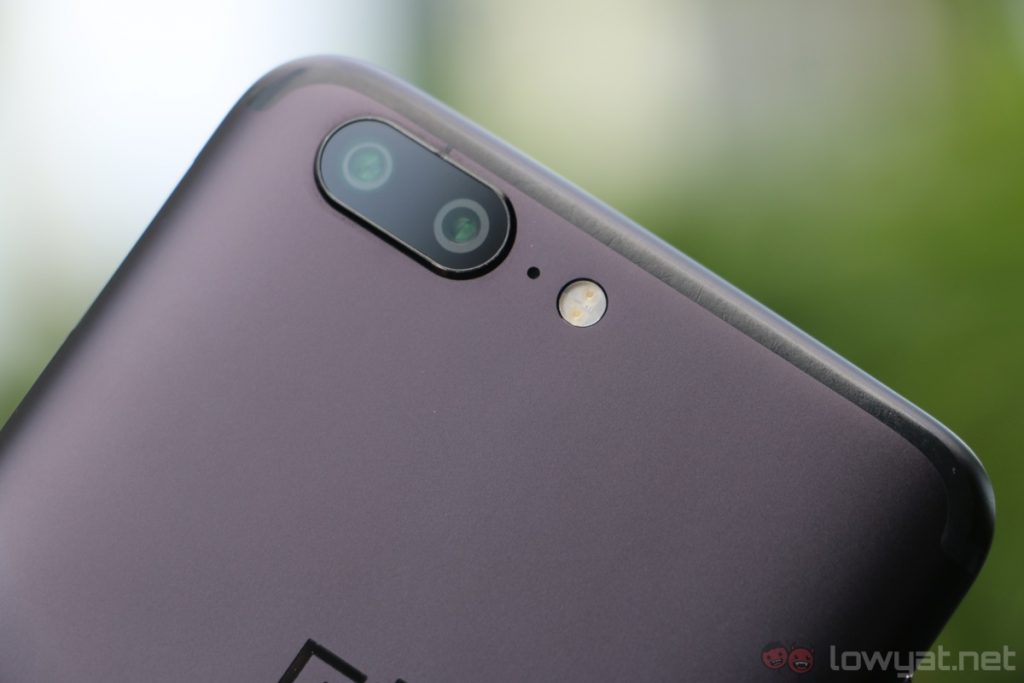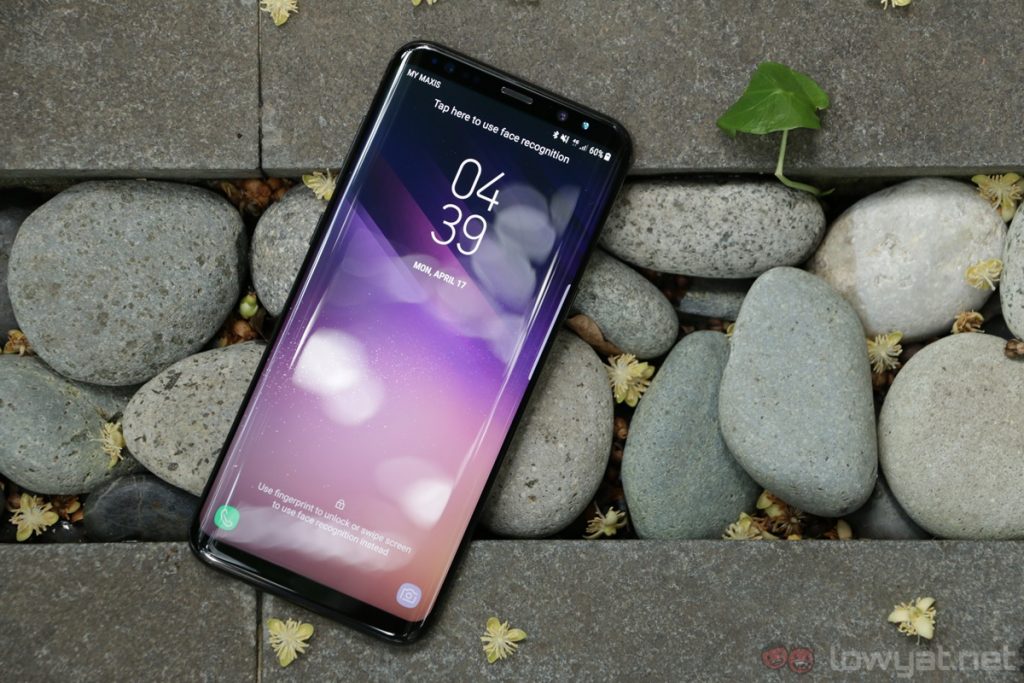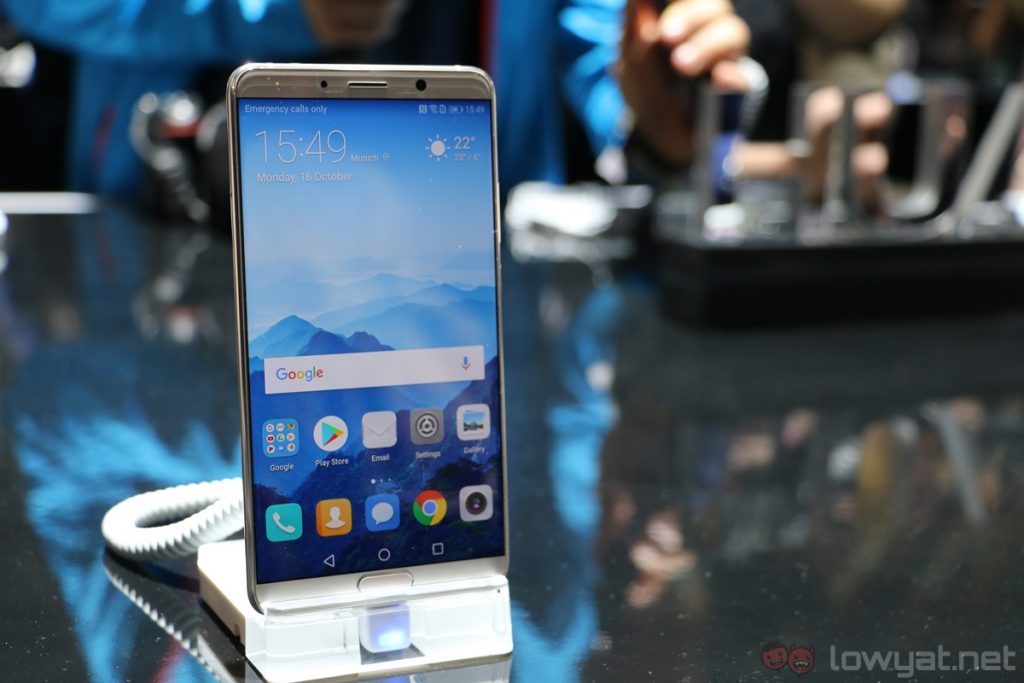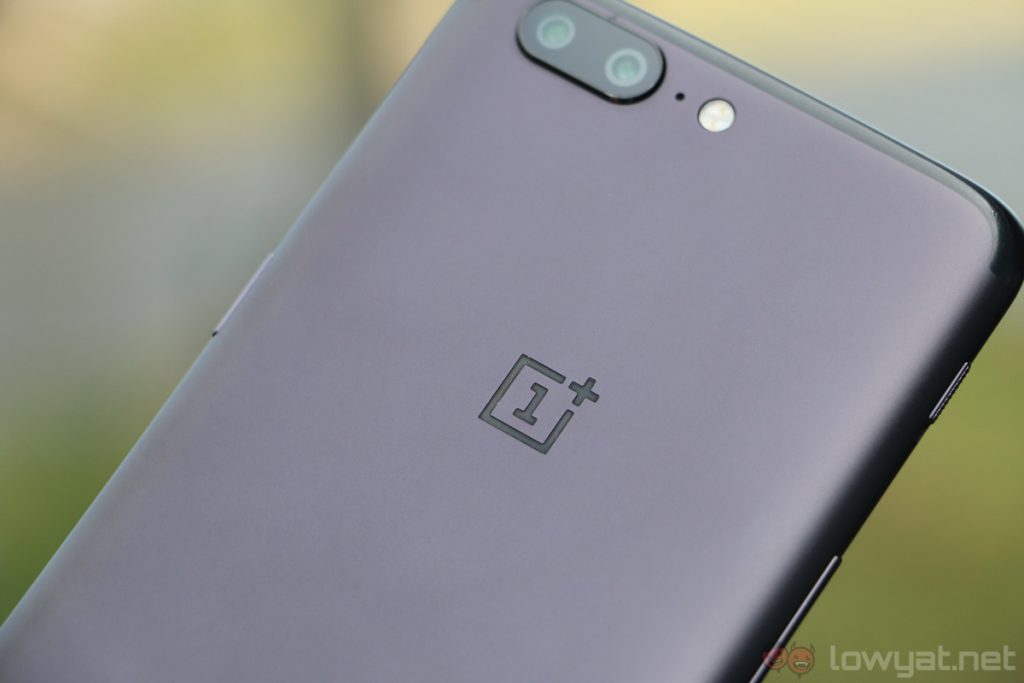The OnePlus 5 is quite different from its predecessors. For one, it’s not quite as affordable anymore, and more importantly, the OnePlus 5’s main appeal – and differentiator – is its dual-camera system, which is actually pretty darn good.
Now, while I’m more than happy to say that the OnePlus 5 is the young Chinese company’s most ambitious and best smartphone yet, it doesn’t exactly strike me as “the best” smartphone money can buy. It is, of course, still a pretty good high-end smartphone.
Specifications
What makes OnePlus devices so appealing are all present on the OnePlus 5. It’s powered by Qualcomm’s best chipset yet, it has up to 8GB of RAM, and it comes with one of the most responsive – and near stock – versions of Android in the market, OxygenOS. However, the 5.5-inch Full HD display is certainly the odd one out here, but it does help in the battery life department.
Design
Unlike noteworthy flagship smartphones in recent times like the Samsung Galaxy S8+ or the LG V30, the OnePlus 5 has a more conventional design. It has a 16:9 display with rather large bezels, and it doesn’t look…well, particularly sleek.
While design isn’t the OnePlus 5’s strong point, it is a comfortable device to hold. It has a slim profile – it only measures 7.25mm thin – its all-metal chassis feels good to the touch, and the OnePlus 5 is definitely well-built.
However, if there’s one thing I’d change, it’ll be the thickness of the OnePlus 5 – it borders on feeling too thin, and a thicker body would give more space for a larger battery. Not that the phone’s battery life is bad, of course, but I’d take a slightly thicker smartphone any day for even better longevity.
Beyond design, the OnePlus 5’s front-facing fingerprint sensor is quick and accurate. It can recognise my fingerprint with only a quick tap, and a front fingerprint sensor is much more accessible than a rear sensor, especially when the phone is placed on a table.
It may not be the sleekest-looking smartphone in the market, but the OnePlus 5’s utilitarian design has its appeals, especially for those who prefer a more minimalist device. Nonetheless, what the OnePlus 5 lacks in design flair is made up in spades in other departments – specifically, software.
User Experience
OxygenOS has been a favourite of Android purists for the longest times, and there are good reasons why. The OnePlus 5 is very zippy and responsive, there are almost no bloatware, and the fact that it feels faster than flagship smartphones that cost considerably more than it is really quite something.
The same goes in the performance department. It’s very enjoyable to do a lot of gaming on the OnePlus 5, and the benchmark scores of the phone certainly show this. I reckon this is thanks to the phone’s 1080p resolution and capable Snapdragon 835 chipset, though software optimisation might play a role here too.
Speaking of which, the OnePlus 5’s Optic AMOLED display is within expectations. Colours are vibrant, black levels are very good – it’s an inherent advantage of AMOLED technology – and it’s a sharp enough display despite only being a 1080p panel.
And then we have the OnePlus 5’s battery life. Equipped with a 3,300mAh battery, I wasn’t expecting much from the OnePlus 5 in the battery life department. Surprisingly, however, it’s quite a long-lasting smartphone: I can consistently get five hours of screen on time throughout the review period.
Dash Charging, on the other hand, is one of the most beloved features of OnePlus smartphones, and the OnePlus 5’s charging rate is as impressive as ever. in 30 minutes, the phone charged up to 60% – this is quite a commendable charging rate.
Pleasant, close to stock Android experience, high level of performance, and good battery life define the OnePlus 5. It performs just like how a flagship smartphone should, and OxygenOS is just a really refined version of Android.
Camera
This is what OnePlus aims to really deliver with the OnePlus 5: a capable camera. Featuring a dual-camera system made up of a a 16MP f/1.7 wide-angle lens with a 20MP f/2.6 telephoto shooter, the OnePlus 5 is a pretty decent shooter. Sure, it lacks optical image stabilisation, and its camera interface isn’t super responsive, but I can get some good-looking shots with the phone.
In daytime, the OnePlus 5 has absolutely no issues taking some really good shots, but this is really a given. Once it gets darker, the phone still performs rather admirably. Pictures are properly exposed, and colours are still quite flattering as well. That being said, the lack of OIS does result in blurred images sometimes.
Portrait Mode on the OnePlus 5 is pretty fun to experiment with too. Under good lighting, I can get some very good results, but once the sun sets…well, it simply doesn’t work in less than ideal lighting. Then again, it’s worth noting that other smartphones with similar camera systems don’t quite work in low-light conditions either.
So does the OnePlus 5 deliver in the camera department? Well, in a way, yes. It’s a much better shooter than its predecessor, that’s for sure, but it’s not the absolute best smartphone camera in the market. The OnePlus 5’s lack of OIS and finicky Portrait Mode are just some of the camera’s weak points.
Sample Images
Competition
There are two versions of the OnePlus 5 in Malaysia: the RM2,388 64GB/6GB model, and the RM2,688 128GB/8GB variant. At these price points, the OnePlus 5 has quite a number of competition, and none is quite as prominent as the Samsung Galaxy S8+.
Although the Galaxy S8+ officially retails at RM3,699, it can be purchased for much less than that now – some retailers are even listing it below the RM2,900 mark. For only about RM200 more, the S8+ offers a sleeker design, a much more superior display and camera performance, as well as support for expandable storage. However, the OnePlus 5 arguably offers better software experience, not to mention slightly better battery life too.
Another alternative to the OnePlus 5 is Huawei’s brand new flagship, the Mate 10. Retailing at RM2,699, the Mate 10 offers a sharper and bigger 5.9-inch 1440p RGBW IPS display, support for expandable storage, Android 8.0 Oreo out of the box, and more importantly, better camera performance as well as battery life. The Mate 10’s 4,000mAh battery really dwarfs the OnePlus 5’s 3,300mAh cell.
But the OnePlus 5 has its own share of advantages as well. Despite running on an older version of Android, the OnePlus 5’s closer to stock Android experience may be preferred by some consumers; it also has double the RAM capacity of the Mate 10 at 8GB.
Conclusion
The OnePlus 5 is OnePlus’ most expensive smartphone yet. It’s still more affordable than other premium-tier phones in the market, of course, but for a company that built its reputation on offering flagship smartphones at an affordable price point, it has to prove that the OnePlus 5 is worth its higher asking price; higher price tag means meeting higher expectations.
For the most part, the company certainly delivered a commendable flagship with the OnePlus 5. It’s fast, it has a near-stock Android experience, and its dual-camera system is pretty good.
Follow us on Instagram, Facebook, Twitter or Telegram for more updates and breaking news.


